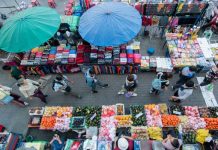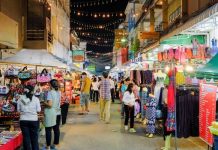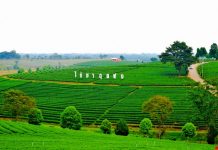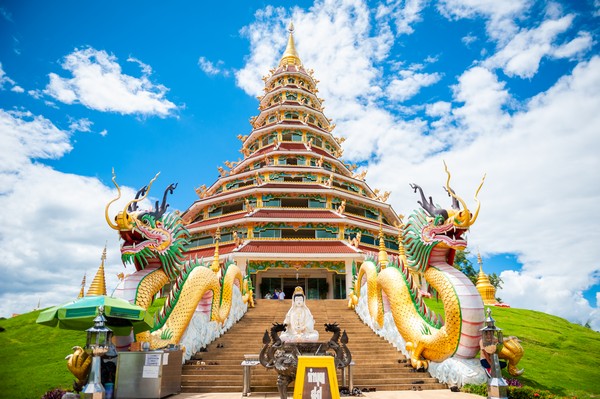
Wat Huay Pla Kang, amaze with the 9-tier Chedi and the most massive Quan Yin Statue in Thailand
Chiang Rai is not the land which is plentiful with the beautiful natural sightseeing, it also offers the numbers of remarkable temples which are magnificent architectures to attract lots of tourists to visit. Such as a Buddhist temple that we brought to recommend you in this article. The important holy place which considered as another “Unseen Destination” in Chiang Rai called “Wat Huay Pla Kang,” the mind central place of the people of Chiang Rai.
Location of the Temple

Wat Huay Pla Kang situated in Rim Kok sub-district, Mueang district, Chiang Rai that not far from the famous blue temple “Wat Rong Sue Ten.” Wat Huay Pla Kang is a Buddhist temple environed with the greenish hills and beautiful landscape. The place is one of the popular sightseeing among the tourist who makes the trip to Chiang Rai especially Chinese visitors.
This monastery is highlighted with the remarkable pagoda “Pobchoke Dhammachedi” the 9 levels structure which is the main pagoda of the temple with the exotic design that can’t find anywhere else but here. The chedi is a great blending of Chinese and Lanna art creating the fabulous and fantastic construction that lures lots of people to witness. Moreover, another highlight of Wat Huay Pla Kang that might be one and only in Thailand which is the statue of “Quan Yin Goddess” that most massive Quan Yin figure in the country with about 69 meters high or the same height of 26-floor building! Well, this might be enough to arouse your attention to know more about this place.
Becoming Wat Huay Pla Kang
Initially, Wat Huay Pla Kang was a deserted temple until there were some faithful people of Huay Pla Kang community, in 2001, coordinated to rehabilitate the land to be a house of the priest. Then, dated November 19, 2005, the arrival of Phra Ajarn Pobchke Tissawangso, a Buddhist monk at the abbey for pilgrimage. The monk pioneered to develop the holy place, as well as, he is proficient in astrology with lots of believers. Consequently, the monk has spread his fame widely in the northern territory and nationwide, rapidly and has brought about the numbers of believers and visitors to the temple.
Afterward, the place started to construct the religious objects begin with the monks’ cell, Sala Karn Parian (the preaching hall), the priest’s eating hall, and chedi, for example. And National Office of Buddhism proclaimed the establishment of this abbey to be the Buddhist temple dated July 24, 2009, with its title “Wat Huay Pla Kang.” Presently, the temple is worshipful of the citizen of Chiang Rai and the districts nearby to visit and pay homage and practice the meditation very much.
The highlight of Wat Huay Pla Kang
Pobchoke Dhamma Chedi
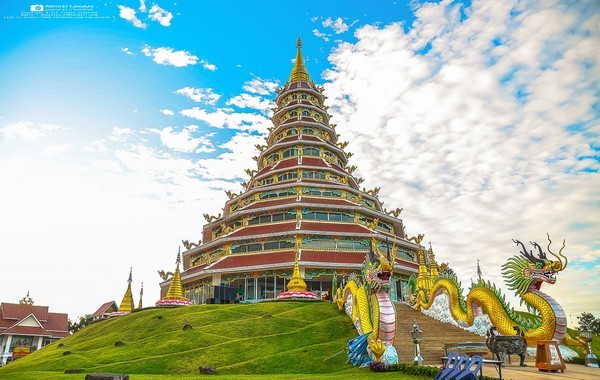
Pobchoke Dhamma Chedi at Wat Huay Pla Kang has recognized the significant place of worship of the compound. The main pagoda was established following the initiative of Phra Ajarn Pobchoke, the abbot of the temple. The pagoda started the construction and piled the foundation on April 26, 2007, with the locals to participate in the laying of the foundation stone ceremony. After that, there are the numerous devotees donate to develop the temple continually and finally the pagoda completed which took about 999 days of building.
Pobchoke Dhamma Chedi is the 9 levels pagoda with outstanding design. The spired shaped pagoda is the mixture of the Chinese and Lanna art with the vibrant red roof and the figures of the elegant dragon line along both sides of the stair. The main pagoda surrounded with the satellite pagodas which are created to be the symbolic pagoda followed to the zodiac for the people to pay respect. Inside the main pagoda enshrines lots of sacred statues – Buddha image, Buddhist saints, and Quan Yin in each floor with the following details;
9 floors inside Pobchoke Dhamma Chedi:
Floor 1: The statue of Quan Yin in the attitude of Blessing. A giant statue of the Chinese goddess made from the sandalwood imported from China, India, and Myanmar.
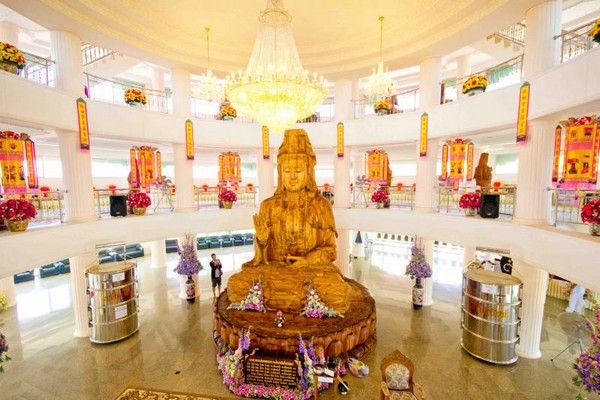
Floor 2: The statue of Standing Quan Yin.

Floor 3: The Statue of Sitting Quan Yin.
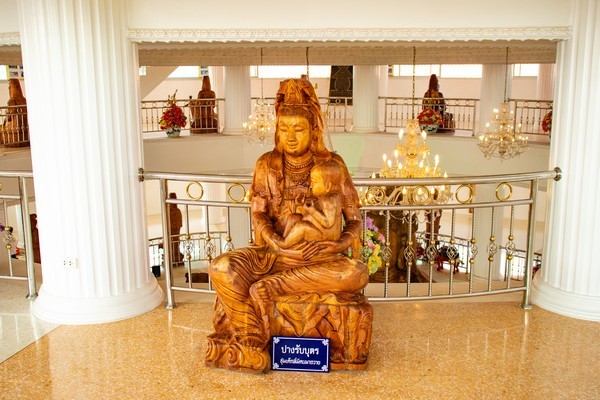
Floor 4: The Buddha image “Luang Pho Sothon.”
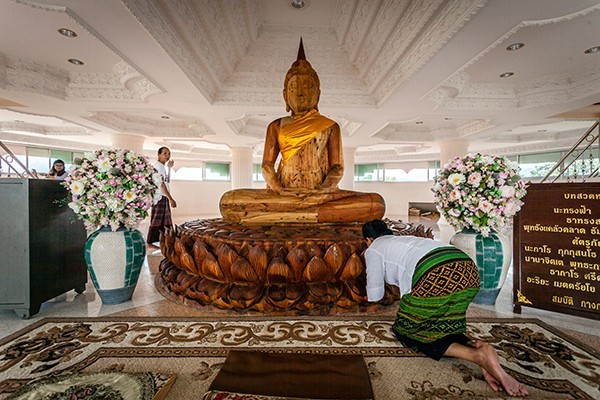
Floor 5: The statue of the Thousand arms Quan Yin.
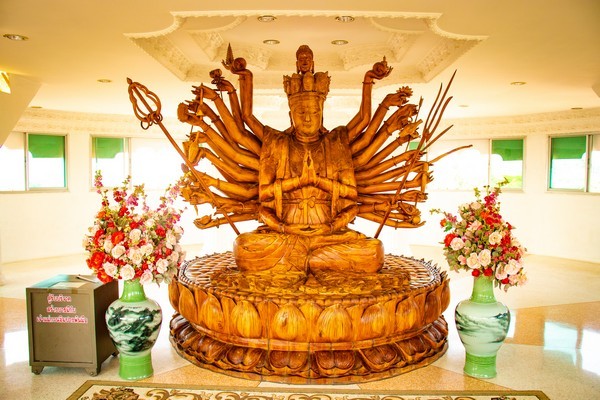
Floor 6: The statue of Somdet Phra Buddhacarya (To Brahmaramsi) and Luang Pu Thuad.
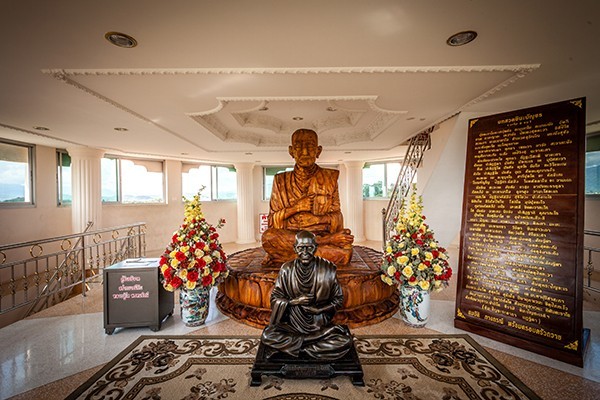
Floor 7: The Buddha statue in the attitude of Spreading Naga.

Floor 8: The statue of Katyayana Saint or also called the Buddhist bodhisattva Maitreya which believes the god of success and wealth.

Floor 9: The statue of Siva. The path to ascend to this floor is narrow and steep, therefore please be careful of your step.
The Gigantic Quan Yin
The notable Chinese female bodhisattva is loftily and worshipful. The statue of Quan Yin at Wat Huay Pla Kang is considered the most massive Quan Yin statue of the country which is the white sitting Quan Yin in the attitude of blessing with up to 69 meters in its height faces to the east. It believes that anyone who makes a wish to the sacred statue regarding health, finance, and occupation would be blessed. The figure allows for the visitors to get inside and up to the viewpoint on the 22nd and 23rd floors via the elevator. The viewpoint features the magnificent view from the top that one who visits the temple should not miss.
Quan Yin statue:
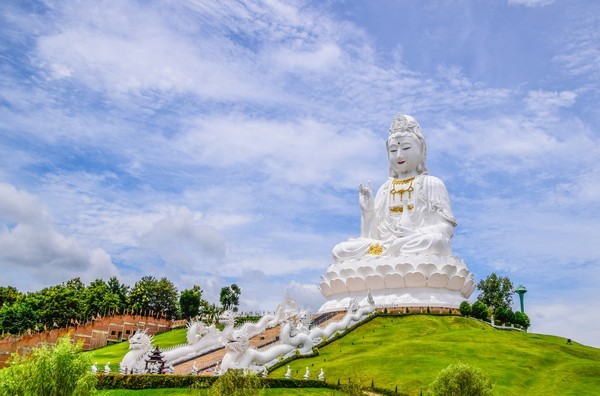
Besides the enormous Quan Yin statue, other images of the Bodhisattva located at Wat Huay Pla Kang are favorite among the believers to pay homage and make a wish as well. Each attitude believed that would give different bless, for example, the Quan Yin statue in the position of physician would bless in healing any sickness. The Quan Yin statue in the attitude of subduing the demon would bless in apology to persons with previous deeds on each other, the Quan Yin statue in the attitude of giving the fortune would bless for one who faces the problem in finance and business.
Pobchoke Restaurant:
Apart from that, there is “Pobchoke Restaurant” which is a canteen inside the temple compound to serve the meal for more than 200 unprivileged children and the old people under the support of the abbot. Also, it serves as almshouse to provide the meals in self-service style for the visitors; noodles, rice noodle with northern style dressing, and rice and curry. The food is free, and it’s appreciative for the donation. Furthermore, there is a medical clinic offering the health treatment with free of charge at Wat Huay Pla Kang, too.
How to get to Wat Huay Pla Kang

Wat Huay Pla Kang opens from 7.00am through 9.30pm daily. To get to the temple can travel on the Paholyothin Road, the direction to Chiang Rai city. The way will pass the Mengrai Monument and the bridge to across Mae Kok river. After crossing the bridge, then please slow down the speed and turn left at the traffic light to enter Ban Mai village in Rim Kok sub-district.
Then, keeps heading and pass Eak O-sha Restaurant until you meet the trisection and make a right turn to the direction to Mae Yao sub-district. So, drives about 1 km and find the sign to go to the temple. The gangway to the temple is on the right side of the road and keep moving until you reach the destination.

